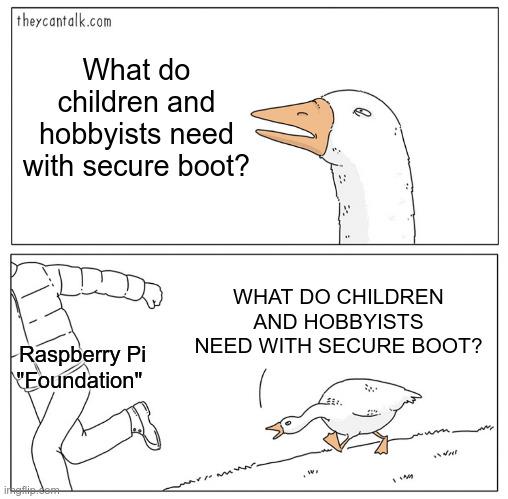- cross-posted to:
- technology@lemmy.ml
- technology@beehaw.org
- cross-posted to:
- technology@lemmy.ml
- technology@beehaw.org
Basically more everything. 2x Cortex M33 cores with floating point, 520KB ram, more PIOs, bunch of secure boot stuff (I have mixed feelings about this), and can boot to a mode with risc-v cores instead of the M33s.
bunch of secure boot stuff (I have mixed feelings about this)

Is… secure boot considered controversial?
My usual experience with it is having to manually enroll a key on my laptop before I can install Linux or having to disable it entirely. Is the concern here that maybe this is a precursor to a more closed ecosystem?
I mean, there’s “secure boot” as a general concept, and then there’s “UEFI Secure Boot.”
The latter definitely had those concerns, especially around 2012 when it first became a thing and a lot of folks were concerned that Microsoft would try to use it to lock down devices to only run Windows. See also:
The level of concern seems like it’s died down a lot since then, not really so much because the Free Software community “won” but because Microsoft backed off a little bit and everybody kind of got used to it (and also because, at this point, we’ve got bigger fish to
fryjailbreak, such as Android devices and such). But that frog is still in the pot, and the water hasn’t cooled off…
As for the former, which is what this discussion is about since we’re obviously not talking about Microsoft or Windows, my cynicism is mostly about how secure boot is a feature obviously aimed at industrial/commercial users. In other words, it represents yet more distraction away from and neglect of the core constituencies – schoolchildren and hobbyists – that the Raspberry Pi Foundation is supposed to be serving.


